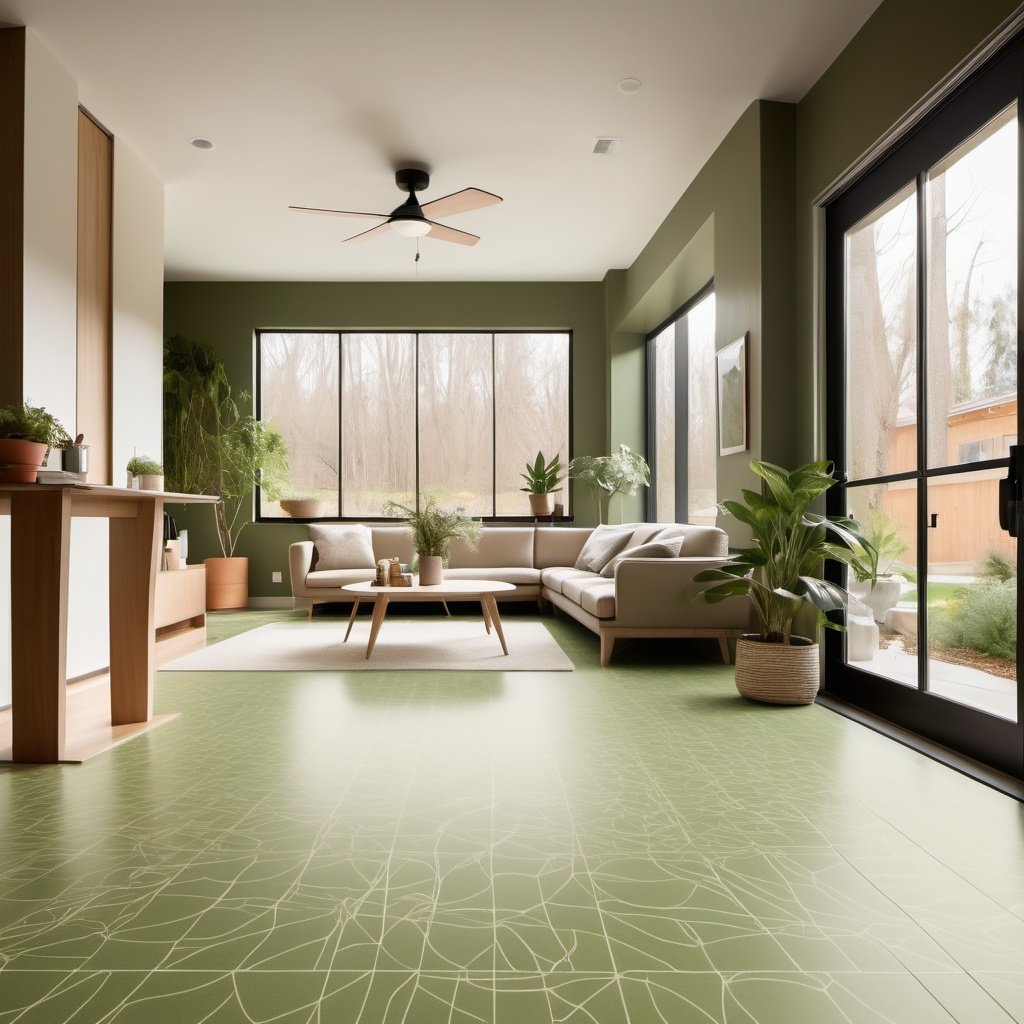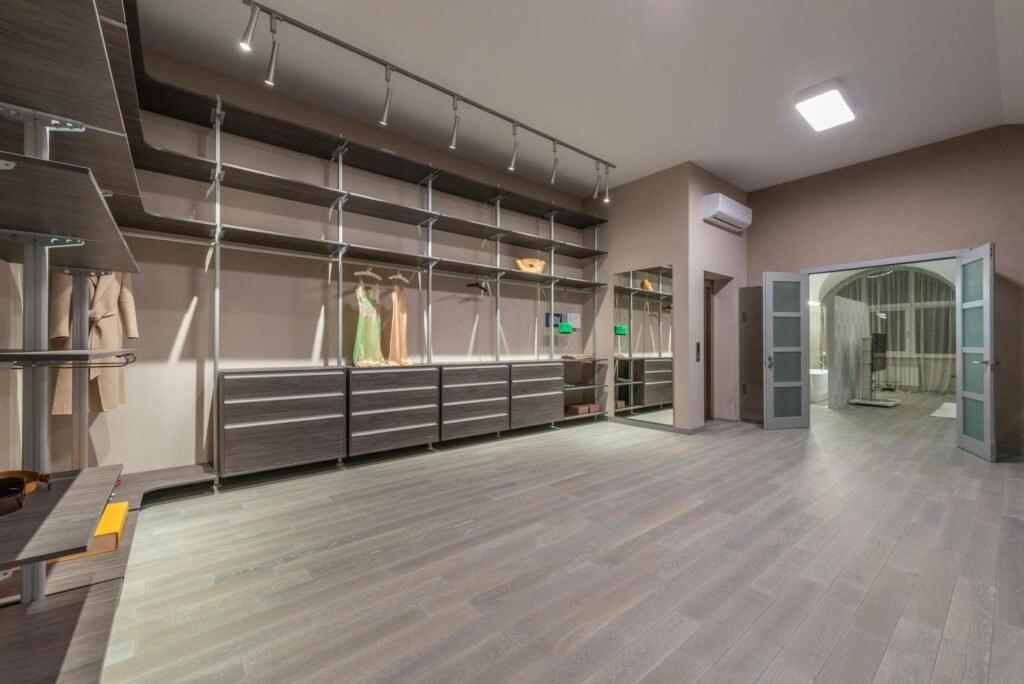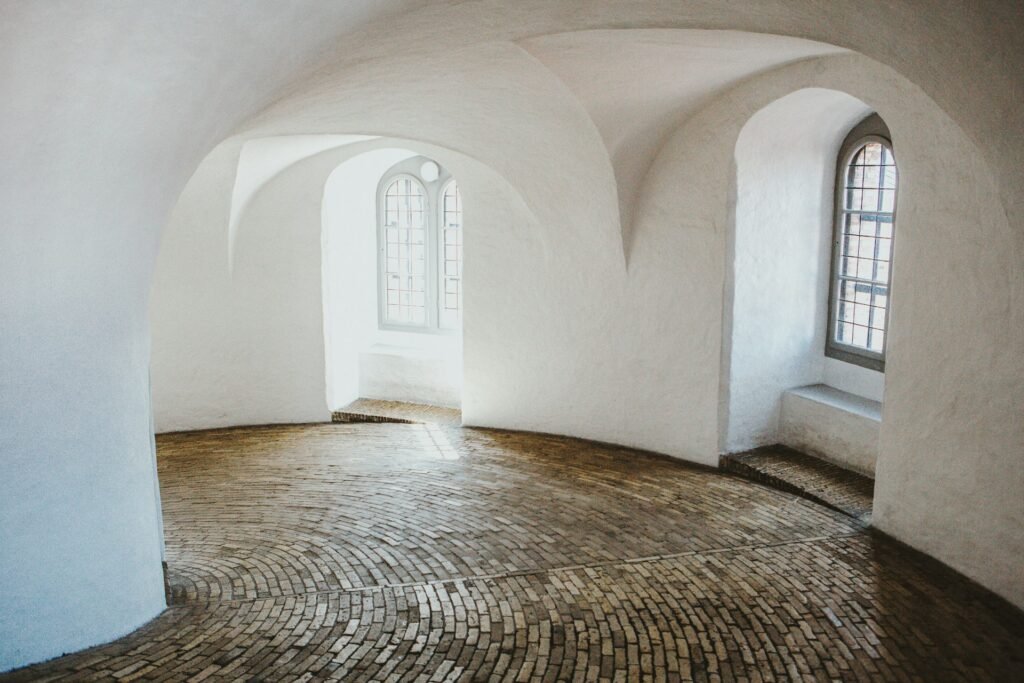Choose Eco-Friendly Floors to Enhance Your Home’s Sustainability
Making sustainable choices is more important than ever when it comes to designing your home. Flooring, as one of the most noticeable and heavily used features of any house, plays a significant role in reducing environmental impact. Beyond aesthetics and durability, eco-conscious flooring can significantly contribute to creating a greener living environment. In this article, I’ll share my journey of integrating sustainable flooring into my home, offering insights and practical advice to guide you in making eco-friendly choices. From bamboo and cork to reclaimed wood, we’ll explore various options to suit different needs and preferences. Whether you’re renovating or building from scratch, let’s discover how you can combine style, comfort, and sustainability underfoot.
What Makes Flooring Eco-Friendly
Eco-friendly flooring refers to materials that minimize environmental harm throughout their lifecycle. Manufacturers often make these floors from renewable, recyclable, or biodegradable resources, from production to installation and disposal. They are free from toxic chemicals, making them safer for your health and the planet. But not all flooring options labeled as “green” are equally sustainable. It’s essential to consider factors like renewability, durability, and overall environmental impact before making a choice.
1. Bamboo Flooring: A Sustainable Superstar
Eco-friendly, Durable, and Versatile

Bamboo flooring has rapidly become a favorite for sustainable homes, and it’s easy to see why. Unlike traditional hardwood, bamboo is a type of grass that grows exceptionally fast—some species can grow up to 36 inches in a single day! This rapid growth rate allows bamboo to be harvested every 3-5 years, unlike hardwood trees, which take decades to mature.
Why Bamboo is Perfect for Your Eco-Friendly Home:
- Renewable Resource: Bamboo regenerates quickly with no replanting, making it a highly sustainable choice. It also produces up to 30% more oxygen compared to the same area of hardwood forests.
- Durability: Surprisingly tough, bamboo flooring is often harder and more resilient than many traditional wood options.
- Stylish Aesthetics: Available in a variety of finishes, including natural, carbonized, and strand-woven, bamboo suits a wide range of interior styles.
- Low Maintenance: Easy to clean and resistant to wear, bamboo flooring is an excellent choice for busy households.
- Eco-Friendly Manufacturing: Bamboo flooring is biodegradable, and growers can cultivate it without pesticides, further reducing its environmental footprint.
Key Tip:
When choosing bamboo flooring, check for certifications like the Forest Stewardship Council (FSC) label; this ensures responsible sourcing and that the product is free of harmful adhesives like formaldehyde.
2. Cork Flooring: Comfortable and Renewable
Perfect for Energy Efficiency and Everyday Comfort

Cork flooring is another top contender for eco-friendly homes. Harvested from the bark of cork oak trees, cork is a renewable material that doesn’t harm the tree during extraction. Cork trees can live up to 200 years, with their bark regenerating every 9-12 years, making cork one of the most sustainable options available.
Benefits of Cork Flooring for Your Green Home:
- Eco-Friendly Harvesting: We source cork without cutting down trees, ensuring long-term sustainability.
- Natural Insulation: With excellent thermal and acoustic insulation properties, cork flooring helps maintain comfortable indoor temperatures and reduces noise levels.
- Comfort Underfoot: Its soft, cushioned texture makes it ideal for spaces where you stand for long periods, such as kitchens.
- Hypoallergenic: Cork flooring is hypoallergenic, offering resistance to meld, mildew, and pests, which helps improve the quality of indoor air.
- Recyclable and Biodegradable: At the end of its life cycle, you can recycle or compost cork flooring, thus reducing waste.
Where Cork Works Best:
Cork flooring is an excellent option for areas like the kitchen, playrooms, or offices, where comfort and durability are key. Its natural warmth and unique texture add character to any room while aligning with sustainable living goals.
3. Reclaimed Wood: Timeless and Sustainable
Preserving Forests While Adding History to Your Home
Reclaimed wood flooring is one of the most environmentally friendly options available, as it reuses existing materials instead of harvesting new timber. This process involves repurposing wood from old buildings, barns, and even furniture, giving it a new lease on life while reducing waste.
Why Reclaimed Wood is a Sustainable Choice:
- Resource Conservation: By reusing wood, you’re reducing demand for logging and preserving forests.
- Unique Appearance: Each piece of reclaimed wood has its history, featuring distinctive grain patterns, knots, and colours that add character and charm to your home.
- Exceptional Durability: Often sourced from older trees, reclaimed wood is denser and more robust than most newly harvested timber.
- Reduced Waste: By choosing reclaimed wood, you’re keeping valuable materials out of landfills.
What to Consider:
Ensure that your reclaimed wood is sourced from a reputable supplier and treated to remove pests or contaminants. This will ensure its longevity and safety for indoor use.
4. Linoleum: A Natural Classic
Affordable, Durable, and Naturally Green

Many people mistakenly confuse linoleum with vinyl, but true linoleum is an entirely natural product made from renewable materials like linseed oil, cork dust, wood flour, and jute. Its production has a much lower environmental impact than synthetic alternatives, making it a long-standing eco-friendly flooring option.
Why Linoleum is a Green Choice:
Natural Composition: Unlike vinyl flooring, made from synthetic materials, manufacturers craft linoleum from renewable, natural materials, making it a biodegradable option that won’t remain in a landfill for centuries.
- Health Benefits: Linoleum is free from harmful chemicals and contributes to healthier indoor air quality.
- Long-Lasting Durability: With proper care, linoleum can last 20-40 years, making it a long-term eco-friendly investment.
- Low Maintenance: Cork flooring is easy to care for, needing just routine sweeping and the occasional mop to stay clean.
Where to Use Linoleum:
Linoleum’s durability and easy maintenance make it perfect for spaces like kitchens, bathrooms, and hallways. Its wide range of colours and patterns allows you to get creative while staying green.
Linoleum comes in a wide range of colors and patterns, making it a versatile option to suit any style. Its resilience and water resistance make it ideal for kitchens, bathrooms, and high-traffic areas. Linoleum is anti-static, reducing dust and allergens—a bonus for those with allergies.
5. Concrete Flooring: Modern, Durable, and Eco-Friendly
Minimalist Aesthetics with Maximum Sustainability
Concrete flooring has gained popularity in modern homes for its sleek, industrial look and eco-friendly potential. While concrete itself is not renewable, its durability and energy efficiency make it a sustainable choice. You can also often polish or stain existing concrete slabs in your home, creating a beautiful floor with no need for additional materials.
Eco-Friendly Benefits of Concrete Flooring:
- Energy Efficiency: Concrete’s thermal mass helps regulate indoor temperatures, reducing heating and cooling costs.
- Extreme Durability: Installed and maintained concrete floors can last a lifetime, minimizing the need for replacements.
- Recyclable: We can recycle concrete into aggregate for new construction projects, reducing waste.
- Versatile Design: You can customize concrete to suit your aesthetic preferences with various finishes, stains, and textures.
Best Applications for Concrete Flooring:
Polished concrete is a good choice for living rooms, kitchens, and outdoor areas. It offers a modern, minimalist look that’s easy to maintain.
6. Porcelain Tile: Made from Recycled Materials
Porcelain tile is another eco-friendly flooring option, especially when manufactured using recycled materials. Many manufacturers incorporate recycled glass, stone, and even plastic into porcelain tiles, reducing the need for virgin resources.

Why Choose Porcelain Tile:
- Sustainability: Porcelain tiles can contain up to 70% recycled materials, lowering their environmental footprint.
- Exceptional Durability: Resistant to water, stains, and scratches, porcelain is one of the most durable flooring options available.
- Versatility: Available in a wide range of styles and colors, porcelain tiles can match various design aesthetics.
7. Laminate Flooring: A Greener Alternative
Laminate flooring can be a sustainable option when sourced. Manufacturers create it by layering a photographic image of wood over a core often crafted from recycled wood products.

Benefits of Laminate Flooring:
- Sustainability: Manufacturers often use recycled materials in modern laminate, and many brands receive certification for low VOC (volatile organic compound) emissions, improving indoor air quality.
- Durability: Resistant to scratches and dents, laminate is a long-lasting option.
- Affordability: More affordable than solid hardwood, laminate provides an economical way to go green.
8. Recycled Rubber: Durability Meets Sustainability
Recycled rubber flooring is an innovative, eco-friendly option, gaining popularity in green home design. This flooring, made from recycled tires and other rubber products, shows how we can repurpose waste materials into functional and stylish solutions.

Key Advantages of Recycled Rubber Flooring:
- Extreme Durability: Resistant to water, stains, and heavy wear, making it ideal for basements, gyms, and playrooms.
- Comfort: Soft underfoot, providing a comfortable surface for various activities.
- Design Variety: Available in many colours and textures to complement different styles.
- Noise Reduction: Its insulating properties help reduce noise—a significant benefit for multi-story homes or apartments.
9. Natural Stone: Timeless and Earth-Friendly
Natural stone flooring, such as slate, granite, or limestone, is an eco-friendly option with a timeless appeal. We source these materials from the earth, and they require minimal processing.

Why Natural Stone Stands Out:
- Longevity: Stone floors can last for centuries, reducing the need for replacement.
- Durability: Ideal for kitchens, bathrooms, and entryways because of its water resistance and strength.
- Aesthetic Value: Offers a natural, earthy look that enhances any room.
Ensure your source natural stone from quarries that follow sustainable practices, as some extraction methods can harm the environment.
10. Carpet Tiles: A Flexible and Green Solution
Carpet tiles offer a modern and versatile option compared to traditional carpets. Often made from recycled materials such as plastic bottles and fishing nets, they provide a sustainable option for those who prefer the comfort of carpet.

Benefits of Carpet Tiles:
- Ease of Replacement: You can replace damaged or stained tiles, reducing waste and costs.
- Low VOC emissions: Manufacturers design many carpet tiles with low VOCs, promoting better indoor air quality.
- Customizable: Available in various colors, patterns, and textures for a personalized look.
While not as durable as hard flooring options, carpet tiles’ sustainability, comfort, and flexibility make them a worthwhile eco-friendly choice.
11. Wool Carpet: Soft, Luxurious, and Natural
For those who appreciate the comfort of carpet, wool is an excellent natural option. As a renewable resource, wool is shorn from sheep and is biodegradable, ensuring it won’t persist in landfills for extended periods.
Advantages of Wool Carpet:
- Natural Insulation: Wool carpets provide excellent insulation, aiding in maintaining indoor temperatures and reducing energy costs.
- Hypoallergenic Properties: Resistant to dust mites and bacteria, wool contributes to healthier indoor air quality.
- Flame Resistance: Wool is flame-resistant, enhancing home safety.
- Luxurious Feel: The softness and comfort of wool surpass that of synthetic carpets, making it ideal for bedrooms and living areas.
When selecting wool carpets, opt for those dyed with natural or low-affected dyes to further minimize environmental impact. While wool carpets may have a higher upfront cost compared to synthetic options, their durability and comfort often justify the investment.
12. Engineered Wood: A Balance Between Sustainability and Style
Engineered wood flooring offers the aesthetic appeal of hardwood with a reduced environmental impact. It comprises a thin layer of hardwood veneer bonded to a core made of plywood or high-density fiberboard (HDF), using less solid wood than traditional hardwood flooring.

Benefits of Engineered Wood:
- Resource Efficiency: Uses less hardwood, conserving natural resources.
- Dimensional Stability: More resistant to warping and swelling, suitable for areas with fluctuating humidity.
- Cost-Effectiveness: More affordable than solid hardwood, making it accessible to a wider range of homeowners.
- Variety of Finishes: Available in many finishes, allowing the look of exotic or rare woods without contributing to deforestation.
When choosing engineered wood, look for products with FSC (Forest Stewardship Council) certification, ensuring the wood originates from managed forests.
Tips for Choosing the Right Eco-Friendly Flooring:
- Evaluate Your Needs: Consider factors like foot traffic, moisture levels, and intended use for each room.
- Research Certifications: Look for eco-labels like FSC, GREENGUARD, or Cradle to Cradle to ensure the flooring meets sustainability standards.
- Prioritize Longevity: Choose durable materials to minimize replacements and reduce waste.
- Think About Indoor Air Quality: Opt for non-toxic finishes and adhesives to create a healthier living environment.
Choosing eco-friendly flooring involves balancing aesthetics, functionality, and environmental responsibility. Whether you prefer the renewable nature of bamboo, the recycled content of rubber, or the timeless elegance of natural stone, there’s a sustainable flooring option to meet your needs.
Consider the entire lifecycle of the flooring material—from sourcing and manufacturing to installation and disposal. By making informed decisions and selecting materials that align with your environmental values, you can create a home that’s not only beautiful and functional but also contributes to the planet.
Incorporating eco-friendly flooring is a significant step toward sustainable living, reflecting a commitment to environmental stewardship in everyday choices.

